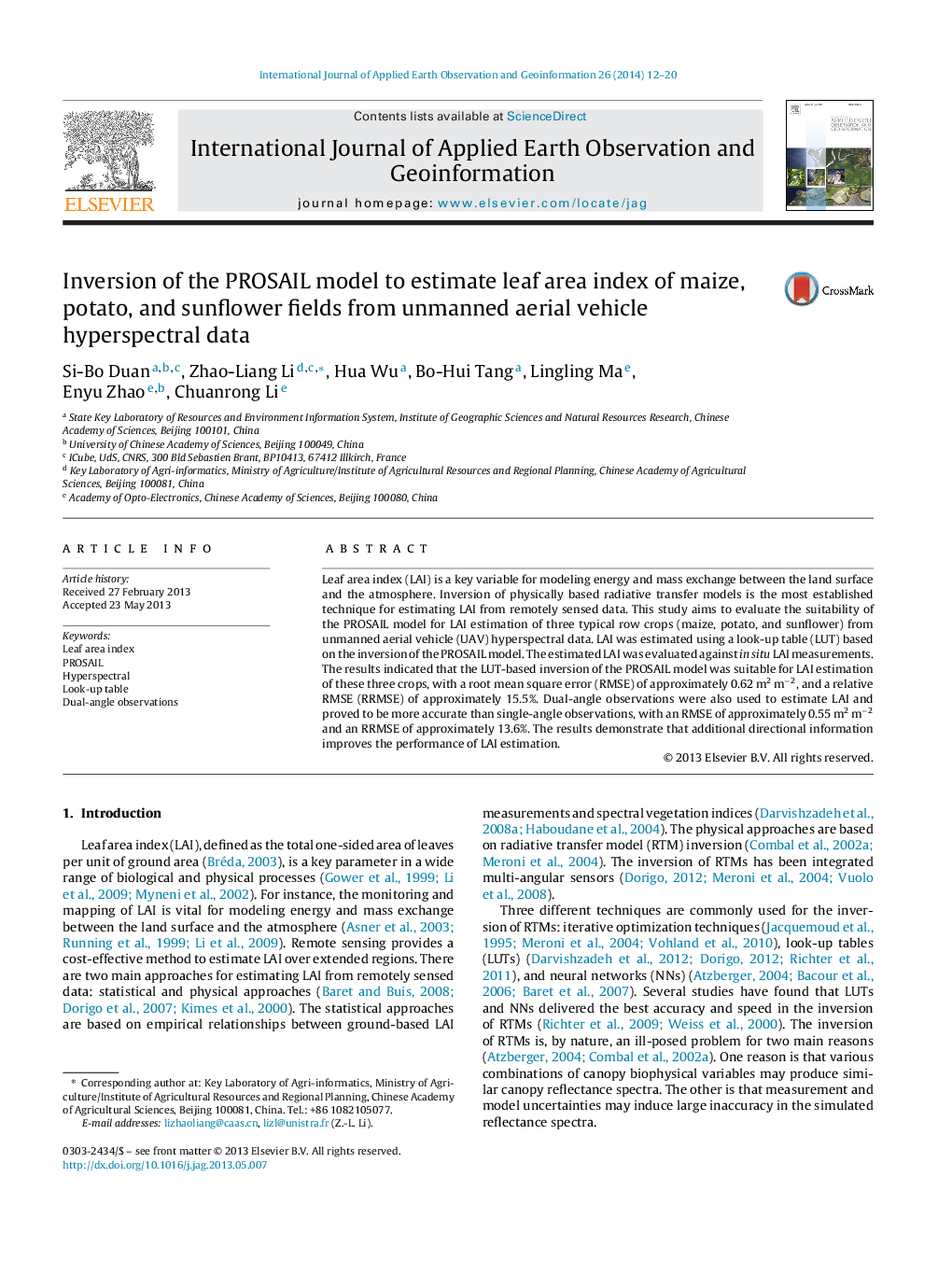| کد مقاله | کد نشریه | سال انتشار | مقاله انگلیسی | نسخه تمام متن |
|---|---|---|---|---|
| 6349095 | 1621834 | 2014 | 9 صفحه PDF | دانلود رایگان |

- The suitability of the PROSAIL model for LAI estimation is evaluated.
- The PROSAIL model is suitable for LAI estimation of maize, potato, and sunflower.
- The accuracy of LAI estimation from dual-angle data is higher than that from single-angle data.
- Different LUT sizes have negligible influences on the accuracy of LAI estimation.
- Different cost functions have significant effects on the accuracy of LAI estimation.
Leaf area index (LAI) is a key variable for modeling energy and mass exchange between the land surface and the atmosphere. Inversion of physically based radiative transfer models is the most established technique for estimating LAI from remotely sensed data. This study aims to evaluate the suitability of the PROSAIL model for LAI estimation of three typical row crops (maize, potato, and sunflower) from unmanned aerial vehicle (UAV) hyperspectral data. LAI was estimated using a look-up table (LUT) based on the inversion of the PROSAIL model. The estimated LAI was evaluated against in situ LAI measurements. The results indicated that the LUT-based inversion of the PROSAIL model was suitable for LAI estimation of these three crops, with a root mean square error (RMSE) of approximately 0.62Â m2Â mâ2, and a relative RMSE (RRMSE) of approximately 15.5%. Dual-angle observations were also used to estimate LAI and proved to be more accurate than single-angle observations, with an RMSE of approximately 0.55Â m2Â mâ2 and an RRMSE of approximately 13.6%. The results demonstrate that additional directional information improves the performance of LAI estimation.
Journal: International Journal of Applied Earth Observation and Geoinformation - Volume 26, February 2014, Pages 12-20